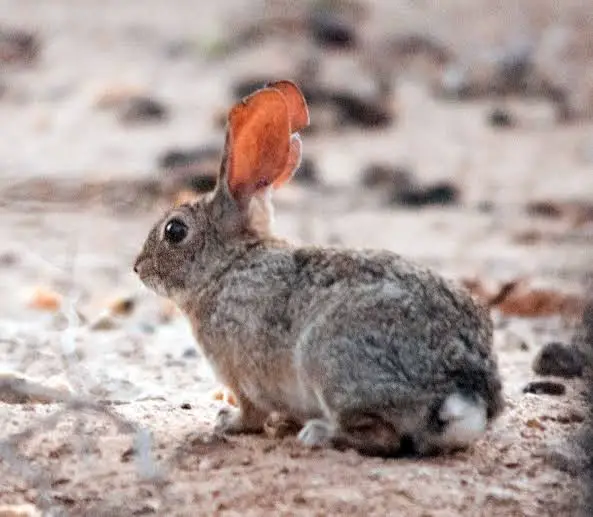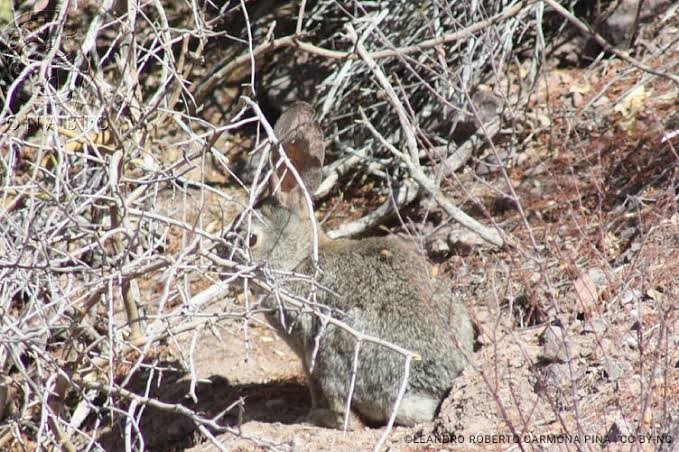Scientific Facts
| Common Name: | San Jose Brush Rabbit |
| Scientific Name: | Sylvilagus mansuetus |
| Life Span: | Reported to live over 6 years |
| Size: | About 11 inches and 1.5 pounds |
| Habitat: | Areas with high tree density |
| Country of Origin: | San Jose Island, Mexico |
San Jose Brush Rabbit Information
The San Jose Brush Rabbit is a wild rabbit species that is endemic to Mexico and can only be found in the San Jose Island in the Gulf of California. However, the San Jose Rabbit is now under threat as these rabbits have suffered at the hands of predation and introduced invasive competitors and species in the wild. They are considered critically endangered and are very difficult to spot in the market or in the wild.
Physical Description

The San Jose Brush Rabbit is a rather small wild rabbit based on its overall length and mass. It rarely grows over 11 inches long and is most likely going to be under 2 pounds in terms of its weight. As such, these rabbits have a small body frame and looks rather thin in comparison to its moderate length.
While the San Jose Brush Rabbit is closely related to the cottontail rabbits found in the southern portion of the United States, they actually have their own unique physical attributes. Their ears are quite large, and one year can be bigger than the entire head. The San Jose Brush Rabbit’s head is also narrower and longer than most other rabbit species’.
Most San Jose Brush Rabbits have a color scheme that is a combination of brown and grey. They are covered with different shades of these colors and are going to most likely look like a salt and pepper mixture. However, they may also have areas (such as the tip of their ears) that have a darker shade of gray that looks closer to black.
Personality

Like many wild rabbit species, the San Jose Brush Rabbit displays a personality that is very different from their domesticated and captive-bred cousins. They are most likely going to be very shy rabbits and are not going to be very fond of human interaction, especially because they are not used to being around humans in the wild. Nevertheless, like other wild rabbits, they are quite docile when handled by humans or by any other dominant species due to their nature as a favorite food source in the wild.
Speaking of which, the reason why San Jose Brush Rabbits are quite shy is that they are getting preyed on by different types of predators in the wild. Feral cats are their top predators and are the biggest reasons why these rabbits are critically endangered. In that regard, the San Jose Brush Rabbit will display a personality that is similar to a lot of wild rabbits in the sense that they will be protective of their own skin and are not very fond of being around many people. They are not the friendliest rabbits and also are not very receptive to playtime and interaction.
Life Span
There is not a lot of information on the usual lifespan of a San Jose Brush Rabbit, but it is believed that they can live over 6 years when predation and habitat destruction are taken out of the equation. These rabbits are critically endangered and are not expected to reach 6 years in the wild due to how there are different factors that contribute to the rapid decline of their numbers.
Reproduction
The San Jose Brush Rabbit is believed to display the same kind of reproductive behavior as many other wild rabbits such as the cottontail rabbit species. They are more active reproductively around November.
Behavior
The San Jose Brush Rabbit displays a crepuscular behavior in the sense that they will be active from around 5pm to 2am and then will begin to rest until 6am when they start to become active once again until 10am. The reason for this behavior seems to be in line with how they are trying to stay safe from predators, which are most likely going to be more active during the day than in the night or early mornings.
San Jose Brush Rabbits are very shy and are not fond of human interaction. Wild-caught and captive-breds are going to display a behavior that is rather defensive in the sense that they are most likely going to stay hidden from plain view due to their nature as prey items in the wild. Forcing them to become friendlier might only stress them out.
Eating Habits
The San Jose Brush Rabbit follows the same kind of diet as any other wild rabbit. They thrive on grass or on hay in the wild and are very fond of eating different kinds of greens and flowering plants. You can expect them to allot 60% to 70% of their daily calorie intake to grass or flowering plants but will also eat vegetables and fruits that are safe for them.
Due to how they thrive on a plant or grass-based diet, the San Jose Brush Rabbits face stiff competition in the wild when invasive animals were introduced. Different types of goats species are their top competitors in the wild due to how these animals are more than likely going to consume greater quantities of grass compared to the San Jose Brush Rabbit.
Cage
San Jose Brush Rabbits should be given a cage that was designed specifically for wild rabbit breeds. They are very shy rabbits that do not like being seen. So, as much as possible, go for a rabbit cage that does not have a lot of see-through sides so that the San Jose Brush Rabbit will get some sort of security.
When furnishing the San Jose Brush Rabbit’s cage, it is important to provide it with large rocks or with logs. The rabbit will use these furnishings as hiding spots for whenever it feels the need to hide and feel secure in its own cage.
Availability – Where to Get one?
San Jose Brush Rabbits are extremely difficult to find in the open market due to their status as critically endangered animals. You may, however, get your hands on one if you actually go to San Jose Island or if you know breeders that come from that area.
How to Care for a San Jose Brush Rabbit?
The trickiest part about caring for the San Jose Brush Rabbit is that it is not used to a life of captivity. This wild rabbit is a rather shy one and is not fond of human interaction and does not like being seen out in the open. Due to that, you have to be extremely patient when caring for one as these rabbits are quite shy when compared to their domesticated cousins.
Other than that, there are not a lot of things to worry about the San Jose Brush Rabbit. So long as you stay patient when caring for it and so long as you do not rush this rabbit, you will find that you and your San Jose Brush Rabbit will be able to live in harmony. However, it is also ideal that you try to have yours reproduce when given a chance because these rabbits are extremely low in numbers and are critically endangered.
FAQs
Is the San Jose Brush Rabbit a good pet to have?
Generally, the San Jose Brush Rabbit is not a good pet to have due to its shy nature and its status as a critically endangered animal.
Are San Jose Brush Rabbits common?
It is very difficult to find a San Jose Brush Rabbit because of its critically endangered status.
Are San Jose Brush Rabbits friendly?
San Jose Brush Rabbits are very shy rabbits due to how they are used to living in the wild.
Are San Jose Brush Rabbits picky eaters?
San Jose Brush Rabbits are not very picky and will eat any type of food that is grass or plant-based.

